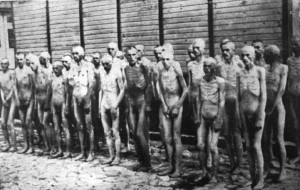The In Sheila Fitzpatrick’s book Everyday Stalinism; Ordinary Life in Extraordinary Times: Soviet Russia in the 1930s, the chapter “A Time of Troubles” analyzes the nature and evolution of the Great Purges of 1937-1938. She introduces the notions of surveillance, when the State monitors its population, and terror, when the population are the target of extreme State violence, and tracks their relationship in the Soviet Union ((Fitzpatrick, Sheila. “A Time of Troubles,” in Everyday Stalinism: Ordinary Life in Extraordinary Times: Soviet Russia in the 1930s. (Oxford University Press, 2000), 190.)) . She writes about how State violence, originally aimed at specific classes, eventually turned inward and escalated due to paranoia and publicity.
I was particularly intrigued in the self-perpetuated escalation of terror within the Soviet Union. The State targeted elite Communist leaders in 1937 because of they abused their regional power, stole money from the State, lived lavish lifestyles, undermined the State, and developed dangerously powerful personal cults ((Fitzpatrick, “A Time of Troubles,” 196)). These habits defined a new type of bourgeoisie class that the Communist Party feared and battled. The public trials by which the State tried these leader, and highly detailed coverage of them, wrecked the state, heightened public interest and awareness. In the same public manner, everyone connected to a guilty individual faced the real threat of State persecution. These criminalization of human interactions and connections set ablaze a wild fire of paranoia among the populous. I am impressed how the nature of the Great Purge naturally changed.
In many respects, the Great Purge outgrew the State. It became a self perpetuating terror. Citizens turned in neighbors for the slightest remarks, suspicions, or seeming self preservation. Fitzpatrick captures the evolution of the Great Purge with the example of Andrei Arhilovsky. This former political prisoner’s attitude towards the Purge shifted over time through three stages. He originally praised the arrest and elimination of enemies of the State, then feared their overwhelming presence as the number of arrests escalated, and ultimately viewed them as “‘a replay of the French Revolution. More suspicion than fact” ((Fitzpatrick, “A Time of Troubles,” 215)). The Great Purge’s fanatic nature fueled it but eventually out grew and consumed itself. Was the escalation of the Great Purge inevitable? Were the Great Purges a product of Modernity or Communism?


